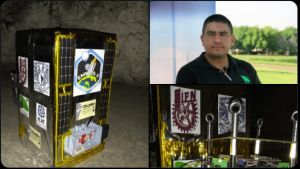The tradition of Día de los Muertos (Day of the Dead) spans back to before Columbus got lost and found himself in the Americas. The original festivity date was initially linked to the harvest season — namely maize, chickpeas, and beans — in August, and part of the crops were used as offerings in altars. The bounty of the harvest was attributed — in a thankful manner — to the dead. Everything that comes from the land goes back to the land. People and plants alike. In strict historical terms, the celebration of the dead was most wide-spread in the central-southern region of the county, where its tradition reaches further.

The arrival of the Spanish conquistadors and their traditions moved the date a bit later on the calendar to Nov. 1 and 2: All the Saints Day and the Day of the Dead. They also added Catholic elements to the altar and the rite, like the crosses, prayers, “holy ground” and the belief of the dead coming back.
The latest addition to the mix is the “Catrina” or Elegant Woman Skeleton who has become the emblem of the contemporary Day of the Dead. This cartoon from the early 1900s was part of a series that explored social “wanna-be” behaviors in the country. This skeleton who drank pulque and partied was a satire of the “garbanceros,” or people who wanted to fake a European origin they did not posses to gain status and importance.
She marked the resurgence and popularization of the holiday promoted by Mexican intellectuals in the 1930s.
Due to this long tradition and exceptional blend of elements, no two celebrations of the Day of the Dead are alike. While setting up an altar and visiting the dearly departed at the graveyard are staple activities of the day, Mexico’s vast geography and diverse culture account for a myriad different celebrations on Nov. 1 and 2.
For example, in the central-eastern region of Mexico, known as the Huasteca, the celebration is known as Xantolo, possibly a derivation from the word santo (saint), where preparations for this holiday in some places start as early as June 24 — the day of Saint John — when the cempasúchil flower is planted.

One of the most notorious and colorful displays of remembrance takes place in the region surrounding the lake of Patzcúaro, Michoacán. The most famous towns include Patzcúaro, Janitzio, Tzintzuntzan, Ihuazio and Zirahuén where urbanites, farmworkers and indigenous groups unite in an all-nighter of song, food and memories at the graveyard.
The most important thing of this holiday, whether you choose to set up an altar or paint your face as the Catrina, is that you make sure you make a stop along the way and pay your respects to those who fell behind along the way. Legend has it that these are the days to catch up with loved ones who have passed on.










